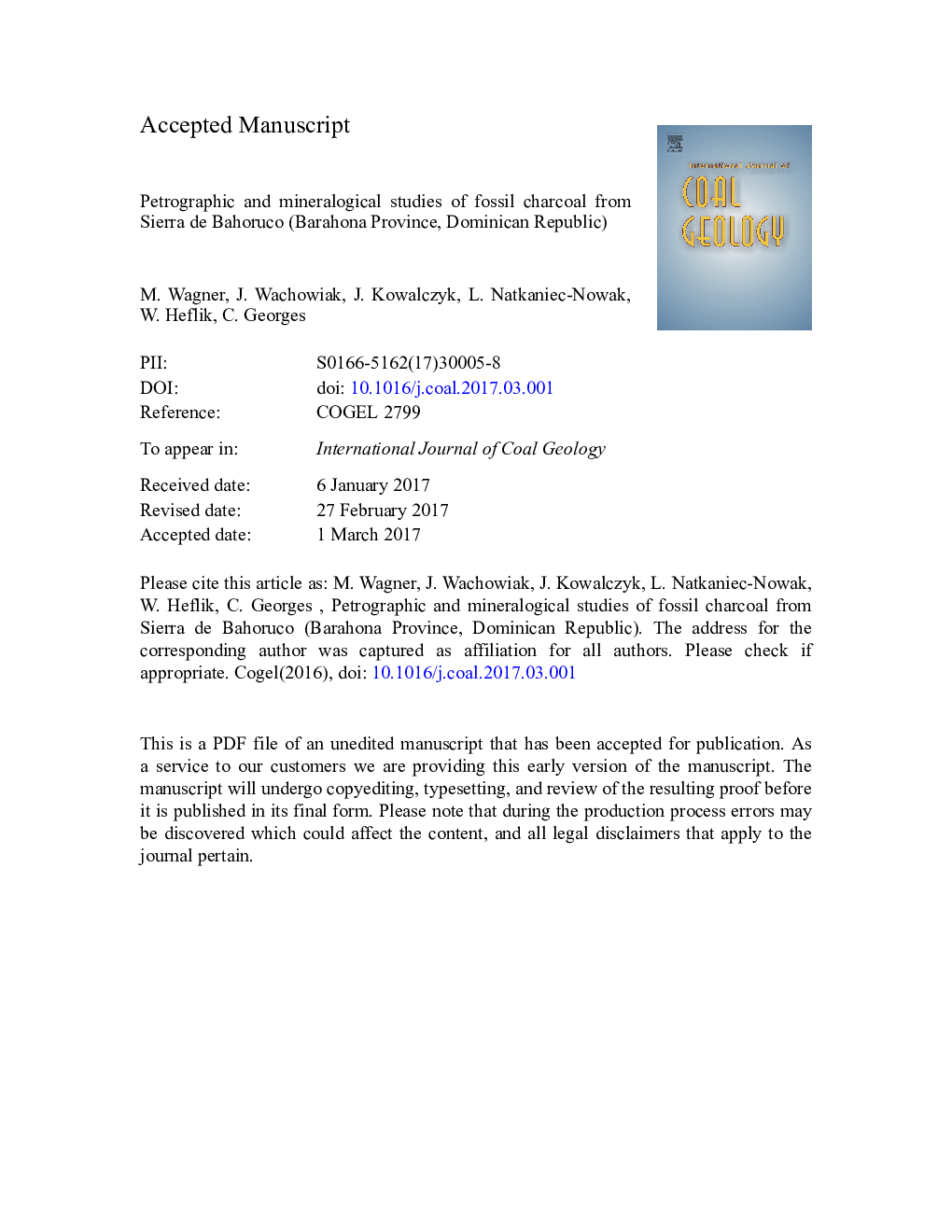| Article ID | Journal | Published Year | Pages | File Type |
|---|---|---|---|---|
| 5483737 | International Journal of Coal Geology | 2017 | 19 Pages |
Abstract
The volcanic formations of the Sierra de Bahoruco mountain range (Barahona Province, Dominican Republic) contain charred fragments of plants, mainly tree trunks, which are composed of dense concentrations of hard mineralized fusain, with diverse microstructures. Petrographic examinations confirmed occurrence of two types of fusinite - structural fusinite with well-preserved tree tissue fragments, and detrital fusinite originating probably from softer tissues of tree phloem. In addition to the fusinite varieties developed from tree trunks and roots, charred tissues of dead external part of trunk epidermis affected by the microbiological process of rotting were identified. Poorly marked seasonal growth rings of trees, the shape and distribution of tree tissues, as well as the degrees of tissue destruction, indicated that the fragments originated from tropical trees growing in specifically marked rain and dry seasons, while wood tissues, charred by the fall of hot volcanic dust, suggested the existence of a monsoon tropical forest on the area. Fusinite was strongly impregnated with calcite and pectolite, sometimes zeolites (prehnite) and chlorite. It was accompanied by iron and copper sulphides, i.e. pyrite, chalcopyrite, and chalcocite. The latter minerals occurred in magma and pyroclastic formations, strongly associated with hydrothermal activities.
Related Topics
Physical Sciences and Engineering
Earth and Planetary Sciences
Economic Geology
Authors
M. Wagner, J. Wachowiak, J. Kowalczyk, L. Natkaniec-Nowak, W. Heflik, C. Georges,
